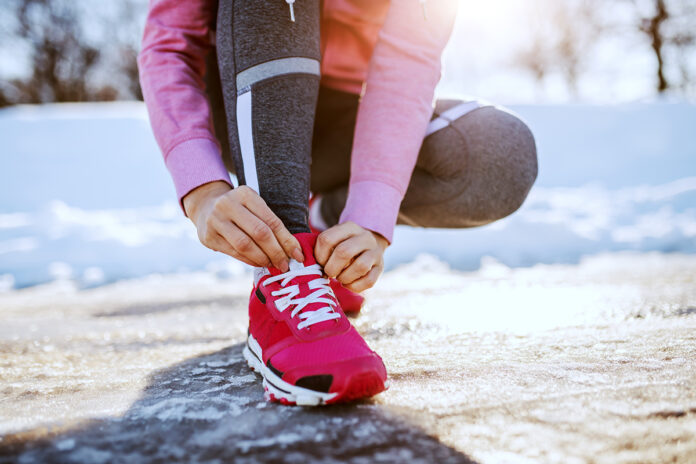
Winter might be the time to cool your racing jets, but a regular running program is a must to keep you fit and primed for a new year of competitive running. Whether you are training to race or simply for the love of your sport, here are seven tips to help keep you charged up until the weather warms.
1. Slow Down!
With cold air and running surfaces that are far from ideal, allow yourself to run slow, breathe easy and stay warm. Additional clothing increases body mass and frictional resistance making your efforts to run a certain pace greater. Be kind and accept a slower pace.
2. Cold temperature
Running increases the mechanical ground forces that are transmitted through frozen footwear. Runners often complain of sore knees and hips after their first run in colder weather. Some of this soreness and residual body ache is caused by different impact and vibrational forces. To avoid discomfort, run shorter durations at a slow pace. If your typical long run is ninety minutes, best to reduce that duration by twenty-five per cent. Runs longer than two hours when the weather is cold are not recommended. But a longer snowshoes workout to build durations and minimize risk of injury is suitable.
3. Multi-layers
A wicking layer, a warm layer and a wind layer. Use mitts over light gloves to protect your hands. Use longer and thicker socks in running shoes that fit you well. Cover exposed skin when temperatures drop below -15C. Monitor the wind chill, too. Use goggles and a facemask or balaclava. Men should make sure they wear wind-resistant undergarments and/or pants!
4. Shoes
Soft-tread shoes and winter non-slip shoe covers with steel studs. These choices will reduce slipping and allow for a slightly longer stride length. Be mindful to strike the ground with your mid-foot (not heel), allowing for the greatest tread contact. This change will likely slow your pace and even stimulate a higher cadence to reach your normal run speeds.
5. Hydratation
On runs greater than 90 minutes hydrate continuously. With additional clothing that likely increases sweat rate, dehydration can occur quickly. Ideally your pace should be slow enough to minimize perspiration. A water bottle waist belt works well, but must be worn underneath the wind layer to prevent freezing.
6. Indoor Training
Do your hard running and intervals on an indoor track or inside on the treadmill. Frequent speed intervals build cardiorespiratory fitness, maintain neurological coordination at higher speeds and challenges the body to handle higher ground forces.
7. Travel
Book a destination race in a warm place to enjoy all your hard work in the cold and offer yourself an earned break from freezing temperatures.
















